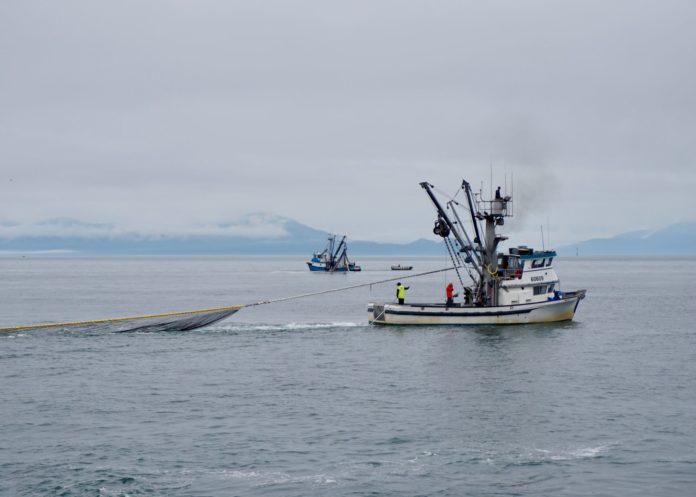
A new Canadian government report on salmon bycatch in the Pacific region groundfish trawl fishery confirms that thousands of salmon were caught and discarded as bycatch in the groundfish trawl fishery off the coast of British Columbia, most of them Chinook salmon likely thrown overboard.
The report released by Fisheries and Oceans Canada (DFO) on Jan. 22 confirmed that an estimated 28,117 salmon were caught, killed and discarded as bycatch in the groundfish trawl fishery by Option A trawl license holders during the 2022-2023 fishing season, with Chinook salmon representing 93% or 26,273 of those fish.
Chinook salmon are the main food source for the less than 100 remaining Southern Resident killer whales, who are listed by NOAA Fisheries as an endangered species. The DFO report said this catch of Pacific salmon was the highest recorded since 2008.
According to Sydney Dixon, a marine specialist with Pacific Wild, a charity in Victoria, B.C., the Chinook killed by the midwater trawl fishery during the 2022-2023 fishing season could have fed three or four Southern Resident orcas for an entire year.
“This is an appalling waste for not just a salmon species that is listed as threatened and endangered in many B.C. and U.S. rivers, but also when the survival of the few remaining Southern Resident killer whales is also at stake,” she said.
Canada’s Pacific Region groundfish trawl fishery is one of the largest fisheries in B.C. by catch volume and value, operating year-round using either midwater or bottom trawl gear to target flatfish, rockfish and other groundfish species. Participants include some 45 vessels that are managed under an individual transferable quota/individual vessel quota system with each vessel individually accountable for their catch.
The DFO report notes that management of the fishery is informed by a comprehensive catch monitoring program with all fishing trips requiring logbook records and independent validation via at-sea electronic monitoring and a dockside monitoring program.
Over the past decades, there have been widespread declines in many stocks of Chinook salmon and a growing number of populations are now assessed as at risk by the Committee on the Status of Endangered Wildlife in Canada, and designated as stocks of concern by DFO, the report said.
Starting in 2021, DFO engaged with industry representatives and monitoring service providers to review monitoring procedures and develop an enhanced monitoring and sampling program for salmon bycatch. That program was initiated on Sept. 26, 2022, and is ongoing through the 2023-2024 fishery.
At the same time as the Canadian government has invested millions of dollars into protecting the Southern Resident killer whales, plus hundreds of millions of dollars to support wild salmon, thousands of Chinook salmon are being slaughtered and squandered annually by B.C. trawlers, Pacific Wild said in a statement released after acquiring a pre-publication cop of the DFO report.
“The indiscriminate nature of this fishery undermines the conservation, stewardship and enhancement measures in place to protect Pacific salmon, as well as the sacrifices made by coastal communities, First Nations and other fisheries to preserve B.C.’s remaining salmon stocks,” the conservation entity said.
This story originally ran in the Feb. 16 issue of The Cordova Times.














